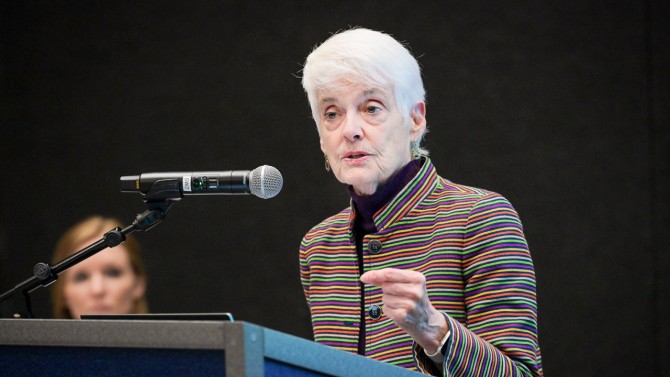Susanne Bruyère and a small team of researchers started a project to identify barriers in the hiring process that prevent qualified autistic job seekers from getting jobs in STEM fields. The results would have helped employers identify ways to streamline hiring autistic individuals and to support them in the workplace after hiring.
Research at risk: Breaking down barriers for autistic job seekers
By Holly Hartigan, Cornell Chronicle
When autistic individuals land jobs in science and technology, they often thrive, yet many struggle to even get hired.
Susanne Bruyère, professor of disability studies in the ILR School, and a small team of researchers started a project in October 2024 to identify barriers in the hiring process that prevent qualified autistic job seekers from getting jobs. The National Science Foundation funded the project with $830,000 over 30 months.
But in May, the team received word that their project had been terminated.
“With an increasing interest in growing our manufacturing, our tech sectors, our AI sectors, this is talent that we need for the workplace of the future,” Bruyère said. “So thwarting opportunities to learn how to better recruit, hire and retain this talent is going to cost American industry in a way that hurts our economic growth for the future.”
Autism diagnoses have increased dramatically in recent years. One in 31 8-year-olds was diagnosed as autistic in 2022, according to the most recent data from the Centers for Disease Control. That number has grown almost fivefold in the last 25 years, said Bruyère, who also serves as academic director of the ILR School’s Yang-Tan Institute on Employment and Disability.
As more people are recognized as neurodivergent, industry leaders understand they have to adapt to support an increasing number of neurodivergent individuals in the workforce if they are going to take advantage of this talent, Bruyère said.
“Many employers are increasingly recognizing that there are individuals with autistic characteristics who have unique skills that businesses want in technology-related industries and tech-intensive sectors,” Bruyère said, “like ability to hyper focus, ability to stay on task for intensive periods of times and ability to see anomalies in data that their peers aren’t necessarily identifying.”
Bruyère and co-principal investigator Katie Brendli Brown, research and evaluation associate in the Yang-Tan Institute, had planned to collect data through surveys and interviews with autistic people working in science, technology, engineering and mathematics (STEM) fields, as well as employers and career counselors in these industry sectors.
The results would have helped employers identify ways to streamline hiring autistic individuals and to support them in the workplace after hiring. It also could have helped career counselors support autistic job seekers.
The researchers undertook the project because employers had asked for help hiring this largely untapped labor pool.
“Talent is a top issue for most employers today,” Bruyère said. Since the pandemic, employees are less attached to their workplaces, and many job openings in STEM fields are just not getting filled, she said.
“We would like to encourage Washington to think about how to nurture this kind of [research] work,” Bruyère said, “which satisfies not only the needs of job seekers who are autistic, but really helps the economy.”
Media Contact
Get Cornell news delivered right to your inbox.
Subscribe




